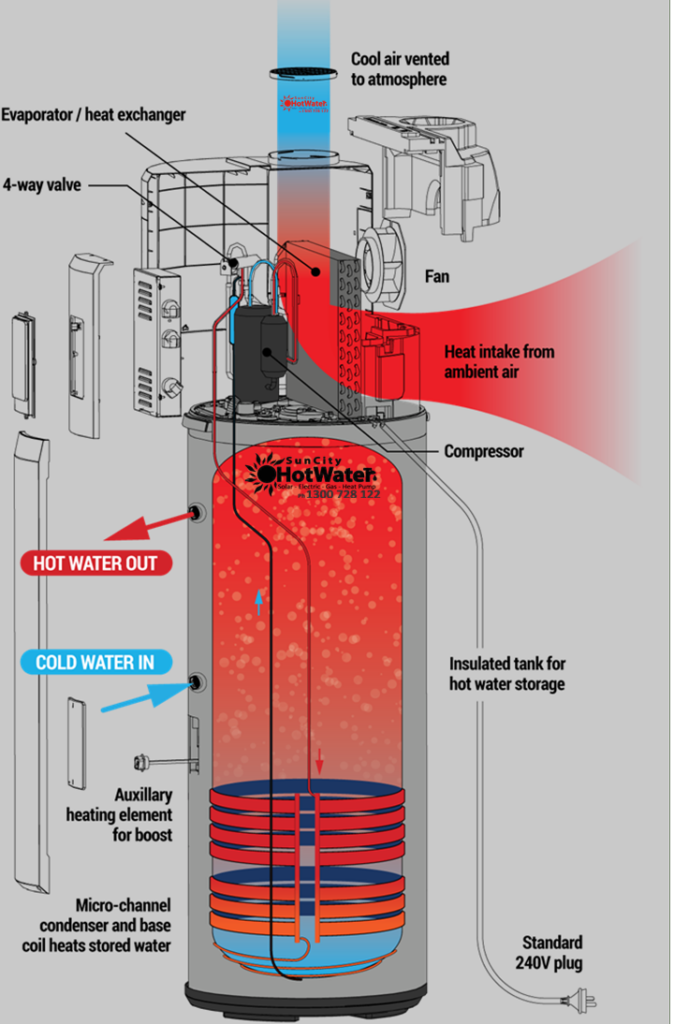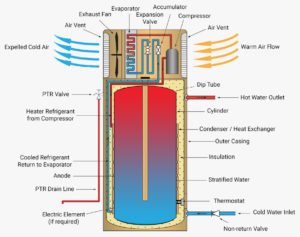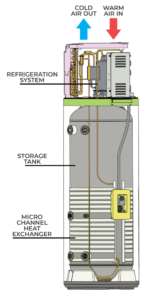Brisbane Hot Water Heaters describes how heat pump hot water systems operate through a sequence of stages that make them very energy-efficient at heating water.
First, a liquid refrigerant moves through an evaporator where it draws heat from the surrounding air and vaporises into a gas.
That gas is then squeezed in an electrically driven compressor, increasing its temperature until it’s hotter than the water in the cylinder.
The heated gas passes into a condenser, where it gives up its warmth to the water and condenses back into a liquid.
The liquid then travels through an expansion valve where its pressure is lowered, cooling it so it can return to the evaporator and start the cycle again.
Electricity powers the compressor and fan, but unlike a conventional electric hot water system that heats water directly, a heat pump transfers heat from the air into the water. This method moves far more heat per unit of electricity used. Performance varies with ambient air temperature — when the air is warmer than the refrigerant the system works efficiently, while effectiveness drops in colder conditions, though modern units can operate in sub-zero environments. In some situations they may be installed indoors in well-ventilated large spaces such as garages.
To keep the evaporator absorbing heat, a constant supply of fresh air is required. An integral fan circulates air and expels the cooled air back outside.
There are two primary types of heat pump water heaters.
Integrated or compact models house the compressor and storage tank in a single unit.
Split systems separate the tank and compressor, like a split air conditioner, and link them with refrigerant piping.






